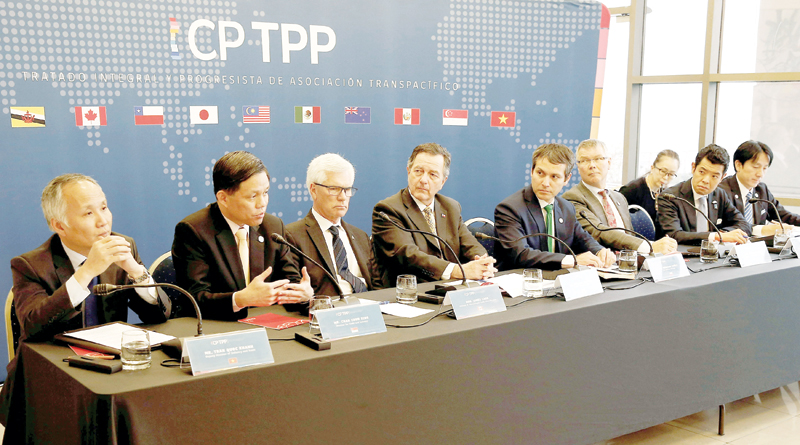

David Lawder -
US President Donald Trump has called his new trade deal with Japan a “phenomenal” victory for US farmers.
But don’t expect America’s Land O’Lakes butter to knock New Zealand’s Anchor or France’s President brands off store shelves in Japan, the world’s third largest economy.
Butter is one of several US dairy products that will not get improved access to Japan’s 127 million consumers under the limited bilateral trade deal signed by Trump and Japanese Prime Minister Shinzo Abe on September 25.
The deal’s full text has not been released and remains classified, but congressional aides, trade experts and industry groups briefed on it say that it offers worse access to Japan for some US agricultural goods than the Trans-Pacific Partnership (TPP), a now 11-country trade deal that Trump quit on his third day in office in 2017.
US butter, milk powder and evaporated milk, along with some grains, would have competed with other TPP signatories for Japan’s new import quotas under the Pacific Rim deal.
When the United States pulled out, that left more space for brands like Anchor or Australia’s Western Star, and Japan refused to grant new quotas for US-made products in the just-completed US negotiations.
But there are gains that bring US beef, pork and wine exports in line with TPP competitors from Australia, New Zealand and Canada, putting them on the same tariff schedule.
“There are some specific parts of the ag sector that really do benefit from this,” said Matthew Goodman, a Asian economics expert at the Center for Strategic and International Studies in Washington. “More broadly, this is not a highly significant deal from a commercial perspective, as it doesn’t touch the biggest item in bilateral trade, autos and auto parts.”
The US-Japan agriculture-centred deal is notable for what it leaves out. It does not include the bulk of products that make up the bilateral trading relationship, notably autos from Japan and aircraft, liquefied propane gas and semiconductor manufacturing equipment from the United States.
Motor vehicles and parts, by far the largest Japanese export to the United States at $56 billion in 2018, were left out for a later phase of negotiations. Abe said Trump agreed not to impose threatened “Section 232” tariffs on Japanese cars and parts on national security grounds.
Japan has no tariffs on cars and trucks from the United States, but US automakers argue that most American cars are kept out by environmental and safety regulations, and Japan’s currency policies that keep the yen low against the dollar.
TPP would have eased Japan’s regulatory barriers, but neither agreement contained any rules to combat currency manipulation — a stated goal of the US Trade Representative’s office.
America’s rice growers won’t benefit from the new bilateral trade deal, as tariffs and quotas on US rice imported to Japan set in the early 1990s remain in place.
Under the TPP, Japan would have accepted 70,000 metric tonnes of American rice per year tariff-free under a US-specific quota, but this was not included in the bilateral deal.
Tim Johnson, president and CEO of the California Rice Commission, said he hoped for a better deal in later phases of US-Japan talks.
Barley also will not get improved access in the trade deal, congressional aides said, as Japan did not expand its TPP-wide quota for the grain used widely in beer production.
Apart from the lack of improved access for butter and milk powder, exact details of cheese provisions in the US-Japan deal are not yet known. TPP would have eliminated Japan’s tariffs of up to 40 per cent on US cheese over 16 years, but dairy industry officials say they eventually expect to be on a par with TPP countries.
“We think it’s probably 80 per cent of what we would have gotten in TPP,” said Michael Dykes, president and CEO of the International Dairy Foods Association.
Documents provided by the Japan’s foreign ministry show that Japan did not grant any concessions for US exports of sugar, chocolate or other confections. Tokyo’s TPP-wide quotas for these products have gone to other countries.
US beef is the major winner in the US-Japan deal and will see Japanese tariffs fall from to 9 per cent from 38.5 per cent by 2033, on the same schedule as TPP competitors Australia, New Zealand and Canada, according to US and Japanese officials. — Reuters
Oman Observer is now on the WhatsApp channel. Click here



